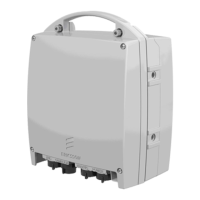5-13 MINI-LINK BAS
EN/LZB 111 0542 P2B Technical Description
5.3.1.1 Transmitter On/Off Switch
While the RN RAU transmits in a continuous way, due to the TDMA
structure adopted in uplink, the AT RAU transmits in a burst way, so
it’s necessary to switch on the NU transmitter only during the time-
slots assigned for transmission.

